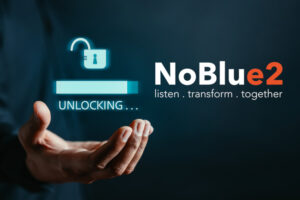Launching a cross-channel marketing campaign with confidence
Cross-channel marketing has become something of a necessity to modern businesses, what with customers being able to follow whichever path they want, as opposed to the traditional, more linear marketing models out there. Nowadays there are plenty of different channels – both online and offline – for marketers to reach out to and engage with their customers.
And the more choices you have, the better, right? Sure, if you’re ordering a pizza. But even in that scenario, the element of choice can also lead to confusion, uncertainty and awkward bloated-ness.
In order to succeed in today’s ever-evolving marketplace, filled with many, many customer touchpoints, you need to be everywhere your customers expect you to be. You need cross-channel marketing. More importantly, however, you need cross-channel marketing that’s done right; implemented through careful planning and spot-on decision making.
Identify useful channels and dismiss the irrelevant ones
Just because a channel exists, that doesn’t mean you have to use it. Choose the channels that are relevant to your business and, first and foremost, the ones that are proven to be engaged with on a regular basis by your customers.
Cross-channel marketing is not about hitting as many different channels as you can. No, it’s about playing off the natural synergies in the channels you are using in order to provide a customer experience that’s natural, unobtrusive and useful…
The whole idea of cross-channel marketing relies on cohesiveness. You need to be able to communicate with and market to customers across various channels, yes, but this only works successfully when the channels you are using work well in combination.
Cohesive content tailored to specific audiences
What makes cross-channel marketing so truly versatile is the different ways the same content can be tweaked and tailored to work across various channels. Producing entirely different content for each channel is time consuming and very costly, not to mention a significant draw from the well of creativity.
What it ultimately does is separate your channels, rather than having the desired effect of making your entire marketing feel more connected and complete, and can lead to mixed or even contradictory messaging to your customers.
Just as choosing your marketing channels carefully is an important part of the process, so is purposing and ‘repurposing’ carefully selected content.
Instead of creating specific content for each channel, decide where to place your flagship content, such as a comprehensive white paper document that’s published on your website, and then distribute supporting content (tailored to specific audiences) across other channels, such as email, social media, SMS, etc.
This not only saves you from having to create new content over and over, it also delivers a more cohesive customer experience across all your marketing channels, strengthening your brand and marketing communications.
Consolidate your customer data with integrated business systems solutions
Unless you built your marketing engine from the ground-up with cross-channel in mind, then it’s more than likely you’re going to have different systems handling each channel; one for overseeing the data pertaining to website customers, one for in-store customers, and so on.
The reason this is problematic is because disparate systems have a hard time communicating with one another. So when one customer interacts with you via a particular channel and then a completely different channel later on, you’re left with fractured data pertaining to that customer’s user behaviors, which makes the data difficult to use in a meaningful way.
This is probably the single biggest concern facing marketers when it comes to cross-channel marketing. Fortunately, there’s technology available to unify these different systems so that data can be shared across all channels and consolidated within a single system for better accuracy, and that technology is a business systems solution.
Cross-functional teams are essential
Another common concern about cross-channel marketing is the need for businesses to constantly shuffle entire teams in order to manage individual marketing channels – a need that comes with the siloed nature of having multiple departments.
Integrated business systems solutions enable the same kind of seamless communication between departments with regards to cross-channel data sharing. In fact, team members can access any data they require to complete tasks, without the restrictions inherent in silo-based systems.
This means businesses can use integrated business systems solutions to create teams that are cross-functional; reducing the amount of time and money spent on all aspects – practical and technical – of maintaining multiple marketing channels. Whilst cloud-based variations of the same software allow businesses to create virtual teams, should it suit the nature of their infrastructure and/or geolocation.












